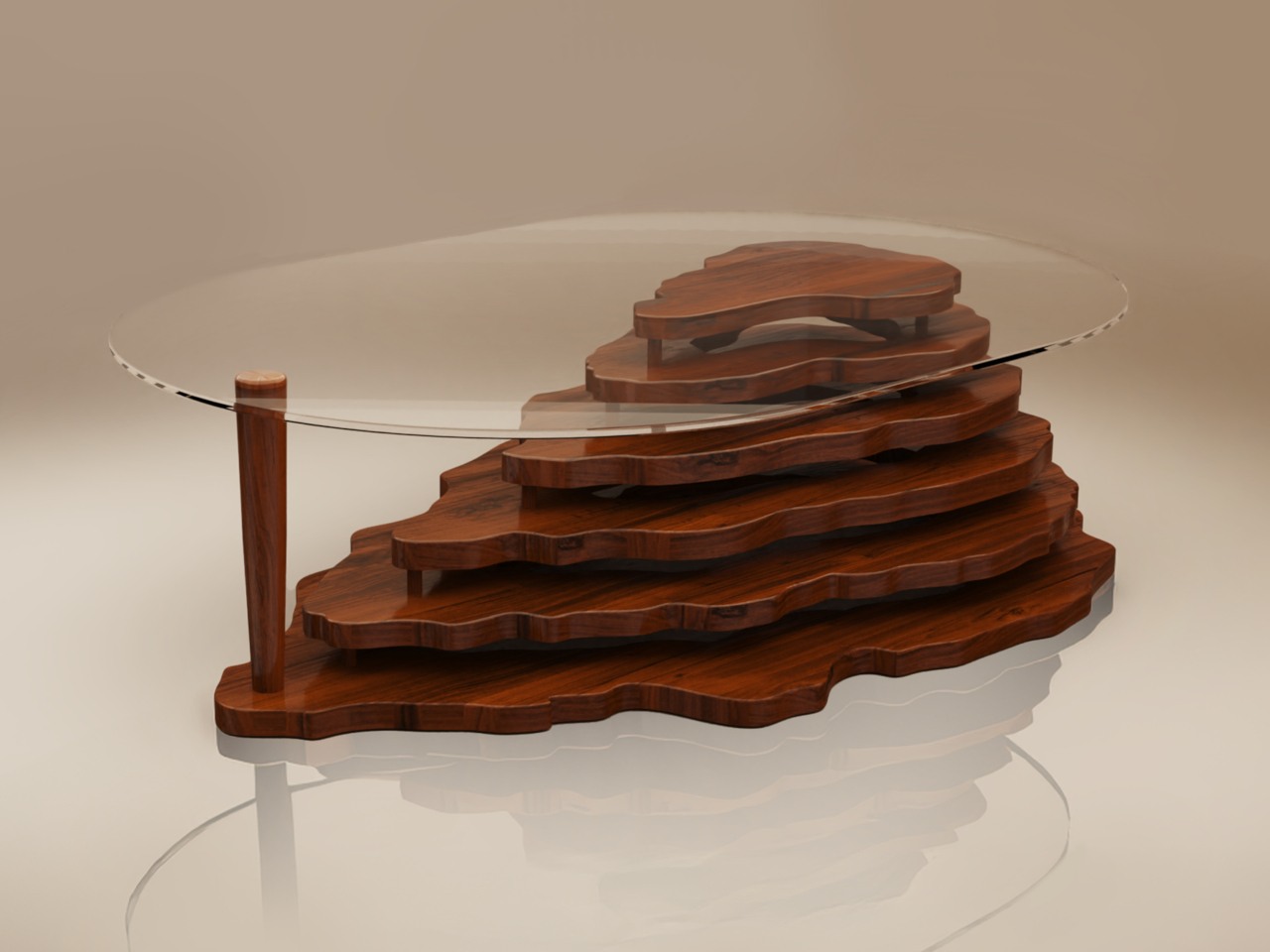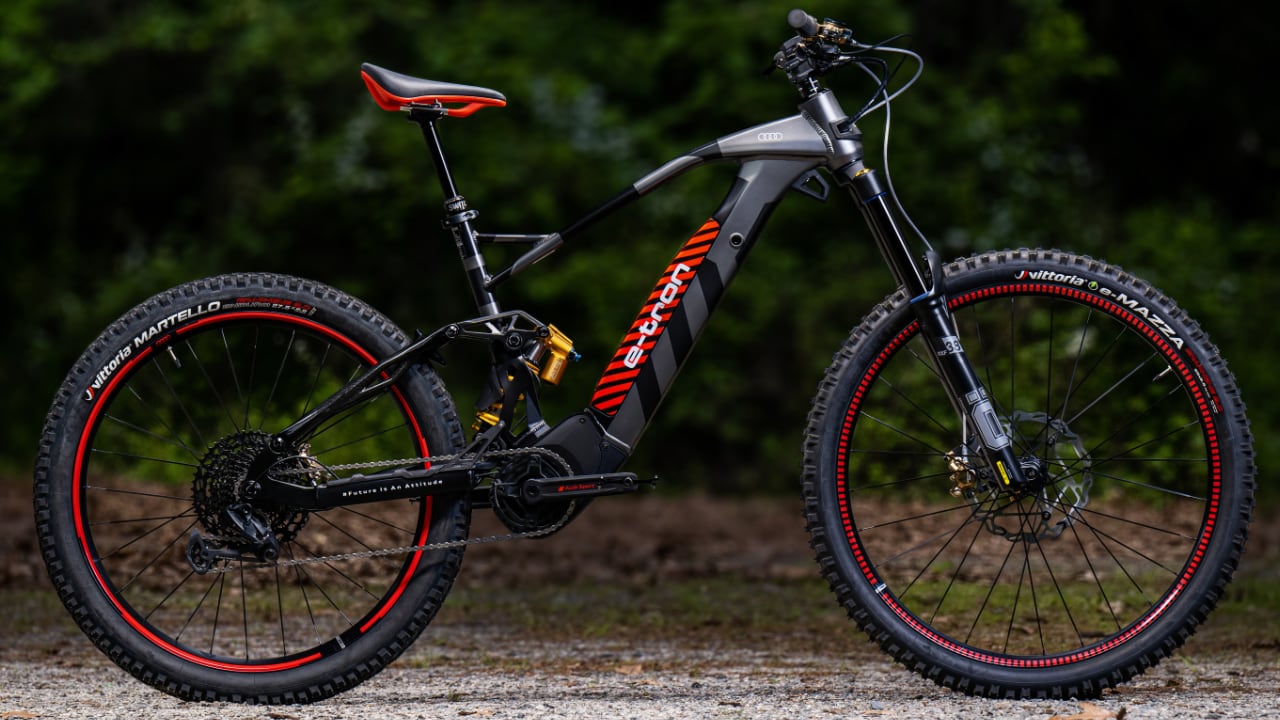
Audi has partnered with the Italian brand Fantic to launch a limited edition electric mountain bike (eMTB), combining the best of automotive engineering and e-bike technology. This collaboration reflects Audi’s deep-rooted motorsport heritage and Fantic’s 50-year legacy in motorcycle excellence, offering a robust option for trail enthusiasts and urban riders alike.
Designer: Audi + Fantic

The eMTB is inspired by Audi’s Dakar Rally-winning RS Q e-tron, incorporating its high-performance DNA into a bike designed for extreme environments. The frame, made from lightweight aluminum, ensures agility and responsiveness, making it suitable for the most challenging terrains. It features a sleek design that’s functional and also visually appealing, echoing the aesthetics of Audi’s pioneering racing models.

Powering the Audi eMTB is the Brose S-MAG motor, known for its seamless, natural pedaling feel and robust output of 250 watts continuous and 565 watts peak power. This motor, complemented by a 720-watt-hour Fantic Integra battery, provides substantial range, theoretically allowing riders up to six hours of riding time at moderate power usage. This combination is ideal for long, adventurous rides where efficiency and reliability are paramount.

There are four levels of electrical assistance—Eco, Tour, Sport, and Boost—each tailored to different riding conditions and preferences. Eco mode is calibrated to deliver maximum efficiency and range, offering substantial electrical assistance for extended rides. Tour mode provides a significant boost and is suitable for varied terrains. Sport mode adds powerful assistance tailored for dynamic cycling, and Boost mode, the most powerful setting, delivers maximum electrical assistance ideal for tackling steep climbs. The level of assistance and the bike’s speed can reach up to 20 mph, with an estimated battery range between 12 and 90 miles, depending on the terrain, rider weight, and chosen level of assist.

The bike’s performance is further enhanced by its class-leading Öhlins suspension system, featuring a TTX22m.2 coil rear shock and RXF38 m.2 fork. This setup mirrors World Cup downhill bike specifications, ensuring smooth handling and effective shock absorption on rough trails. The inclusion of high-end Braking 4 piston hydraulic disc brakes guarantees that riders can manage high speeds safely and comfortably.
Fantic XEF 1.9 Factory enduro e-bike vs. World Cup downhill spec cross-country bikes

When comparing World Cup downhill spec cross-country bikes with the Fantic XEF 1.9 Factory enduro e-bike, several similarities stand out:
- Advanced Suspension: Both types of bikes use high-performance suspension to handle rough terrains. While XC bikes now commonly feature up to 120mm of travel, the Fantic XEF 1.9 goes further with a 190mm RockShox ZEB fork for even tougher trails.
- Power Assist: Unlike traditional XC bikes, the Fantic XEF 1.9 includes a motor. This Brose S-MAG motor offers powerful assistance, similar to what might be useful on tougher XC courses, helping with challenging climbs.
- Stable Geometry: Both XC and the Fantic XEF 1.9 are designed for stability. The XEF 1.9 uses downhill bike features like a slack head angle to enhance control on descents, a trend that’s growing in XC designs.
- Dropper Posts: Dropper posts are becoming increasingly common in XC racing for better control on descents. They are a standard feature on the Fantic XEF 1.9 and enhance maneuverability.

- Tough Tires: Both bike styles sport robust tires suitable for diverse trail conditions, ensuring grip and durability on rough tracks.
These features make the Fantic XEF 1.9 well-suited for enduro and similar to modern XC bikes that are built to tackle increasingly technical courses.

Beyond these technical specifications, the Audi eMTB is versatile and designed to cater to the needs of expert bikers navigating black trails as well as those seeking an exhilarating ride on local paths. It is classified as a Class 1 e-bike, which means it assists up to 20 mph and is permissible on a variety of bike trails, ensuring compliance with most local regulations.

Key Components Contributing to Cost:
- Motor—Brose S-MAG: This motor offers 250 watts of continuous power and peaks at 565 watts, with 90Nm of torque. It is known for its robust performance and natural pedaling feel.
- Battery—Fantic Integra 720Wh: This high-capacity battery provides up to 6 hours of ride time at moderate power usage, enhancing both aesthetics and balance.
- Suspension System – Öhlins Components: Features the Öhlins TTX22m.2 coil rear shock and Öhlins RXF38 m.2 fork, crucial for smooth rides on rough terrain and renowned for superior performance and comfort.

Audi and Fantic’s new electric mountain bike combines tough components and sleek design with advanced technology and user-friendliness. Priced at $9,795 and available this summer, it sets a new standard in the rapidly expanding e-mobility market. Designed for biking enthusiasts and professionals seeking top-notch gear to boost their rides, this bike showcases the culmination of Audi’s innovation and Fantic’s expert craftsmanship in e-bike design. With all things considered, I’d venture to say the price tag is justified—now, if only Audi would throw in a bottle holder!

The post Is Audi’s $10,000 Electric Mountain Bike Worth the Price Tag? first appeared on Yanko Design.
![]()
![]()
![]()
![]()
![]()
![]()
![]()
![]()
![]()

